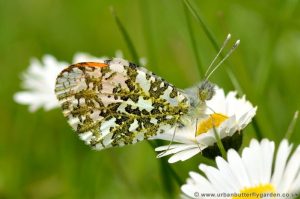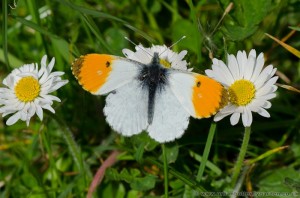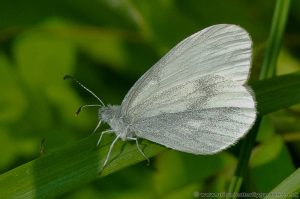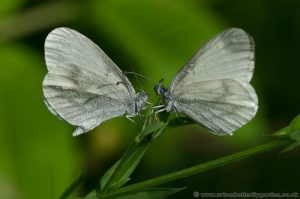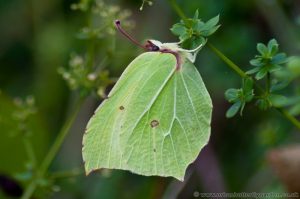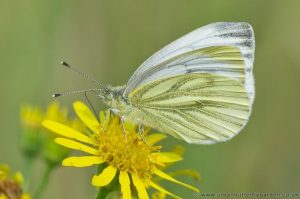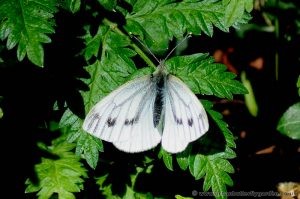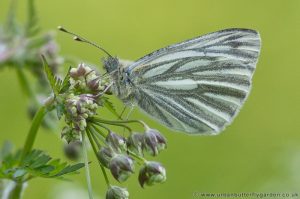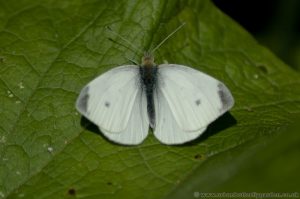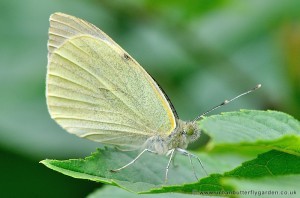Widespread across Southern and Central Britain, Wales and as far North as Scotland, usually seen from the beginning of April through to June.
The male Orange-tip butterfly, is quite striking in flight with an orange patch on the outer half of the fore-wings, and black wing tips.
The female however lacks the orange patch on the fore-wings but both share marbled-green under-wings, black wing tips and a black spot on fore-wings.
Orange-tip habitat
Often found in a wide range of habitats, Orange tip butterflies can be seen anywhere, from country lanes and forest paths, to gardens and parks. Particularly active on warm sunny spring days, they fly close to the ground, stopping briefly to nectar before continuing.
Information
- Family group : Pierinae – Whites.
- Wingspan around: 40mm.
- When: April-June with numbers peaking around mid May although this may vary from year to year.
- Caterpillars feed on : Cuckoo Flower (Cardamine pratensis), Hedge Mustard, Sweet Rocket
- Early nectar plant : Common Violets, Dandelions (Taraxacum officinale) , Greater Stitchwort, Cow parsley, Bluebells, Common Daisey, Ground Ivy, Hedge Mustard, Iberis sempervirens, among others
- Photographed : 15th May 2010.
- Location : My garden, South Lincolnshire.
- Updated : 16th October 2012.

